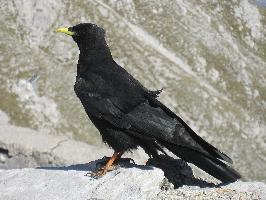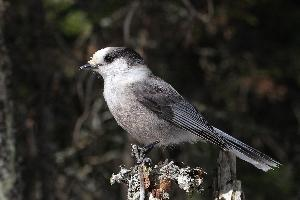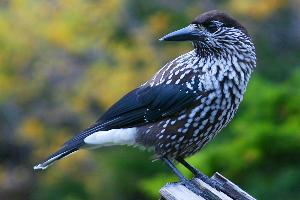
Súlyok és méretek
| Hossz | 32-tól 35-ig cm |
|---|---|
| Súly | 150-tól 180-ig g |
| Szárnyfesztávolság | 52-tól 58-ig cm |
Állatleírás
The Eurasian jay (Garrulus glandarius) is a striking and adaptable bird belonging to the crow family, Corvidae. With a widespread presence across Europe, North Africa, and parts of Asia, this species exhibits a remarkable adaptability to various habitats, including deciduous and mixed forests, parks, and mature gardens. The Eurasian jay is known for its intelligence and complex social behaviors, characteristics that are emblematic of the corvid family.Physically, the Eurasian jay is a medium-sized bird, typically measuring between 32 to 35 cm in length, with a wingspan of approximately 52 to 58 cm. It weighs between 140 to 190 grams. The bird is most recognizable by its striking plumage; its body is primarily a light pinkish-brown, which contrasts beautifully with its white throat and rump. The bird's wings are a standout feature, displaying a vibrant blue patch with black barring, visible when the bird is in flight or displaying. The tail is black and white, and the bird has a stout, black bill. The head is adorned with a black streaked crown and facial area, which can appear almost crest-like when the bird is excited or agitated.
One of the most fascinating aspects of the Eurasian jay is its voice. The bird is known for its remarkable ability to mimic the calls of other birds and even some mechanical sounds. Its natural calls are varied, including harsh, scolding tones and beautiful, musical notes. This vocal versatility plays a role in social communication within their species and possibly in deceiving predators or rivals.
Eurasian jays are omnivorous, with a diet that includes a wide variety of foods. They are known to eat insects, nuts, seeds, and fruits, as well as small vertebrates and bird eggs. Acorns are a particularly favored food source, and jays play a crucial role in the dispersal of oak trees. They cache acorns and other seeds for later consumption, a behavior that inadvertently aids in forest regeneration. Their ability to remember the locations of hundreds of caches is a testament to their intelligence and memory capabilities.
Breeding season for the Eurasian jay begins in early spring. They are monogamous birds, often forming long-term pair bonds. Nests are typically constructed in trees and are made from twigs, lined with finer materials such as roots and hair. The female lays between 4 to 6 eggs, which she incubates for about 16 to 19 days. Both parents partake in feeding the chicks, which fledge approximately 21 to 23 days after hatching.
The Eurasian jay, despite its beauty and ecological importance, is often regarded with ambivalence in folklore and culture, sometimes seen as a symbol of misfortune or thievery, likely due to its loud calls and opportunistic feeding habits. However, their role in ecosystem dynamics, particularly in seed dispersal, underscores their importance in natural processes.
Conservation status of the Eurasian jay is currently listed as Least Concern by the IUCN, reflecting its wide distribution and stable population numbers. Nevertheless, habitat destruction and changes in land use pose ongoing threats to their habitats, making conservation efforts important to ensure their continued place in the world's ecosystems.
Hasonló állatok
Új állatfotók
Top 10 állat
- Dolphin gull (Leucophaeus scoresbii)
- Diana monkey (Cercopithecus diana)
- Moustached guenon (Cercopithecus cephus)
- Galápagos tortoise (Geochelone nigra complex)
- Japanese macaque (Macaca fuscata)
- Russian tortoise (Testudo horsfieldii)
- Stone loach (Barbatula barbatula)
- Greek tortoise (Testudo graeca)
- Common flying dragon (Draco volans)
- Vendace (Coregonus albula)


